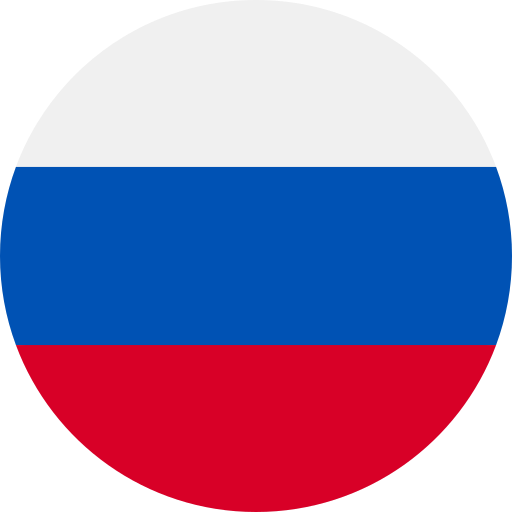DOI: 10.29188/2222-8543-2024-17-4-56-66
For citation:
Sivkov A.V., Panteleev V.V., Romikh V.V., Kukushkina L.Yu., Zakharchenko A.V., Apolikhin O.I., Kaprin A.D. Comparative effectiveness of alfuzosin (Alfuprost® MR) and solifenacin (Vesigamp) combination therapy in patients with BPH and overactive bladder, with moderate and severe symptoms of lower urinary tract dysfunction. Experimental and Clinical Urology 2024;17(4):56-66; https://doi.org/10.29188/2222-8543-2024-17-4-56-66
Sivkov A.V.
Panteleev V.V.
Romih V.V.
Kukushkina L.Yu.
Zaharchenko A.V.
Apolihin O.I.
Kaprin A.D.
Information about authors:
- Sivkov A.V. – PhD, Deputy Director of N. Lopatkin Scientific Research Institute of Urology and Interventional Radiology – Branch of the National Medical Research Centre of Radiology of the Ministry of Health of Russian Federation; Moscow, Russia; RSCI Author ID 622663, https://orcid.org/0000-0001-8852-6485
- Panteleev V.V. – PhD, Head of the Department of Postgraduate Education of N. Lopatkin Scientific Research Institute of Urology and Interventional Radiology – Branch of the National Medical Research Centre of Radiology of the Ministry of Health of Russian Federation; Moscow, Russia; RSCI Author ID 989220
- Romikh V.V. – head of department of urodynamics and neurourology of N. Lopatkin Scientific Research Institute of Urology and Interventional Radiology – Branch of the National Medical Research Centre of Radiology of the Ministry of Health of Russian Federation; Moscow, Russia; RSCI Author ID 691395, https://orcid.org/0000-0003-3342-7281
- Kukushkina L.Yu. – researcher of department of urodynamics and neurourology of N. Lopatkin Scientific Research Institute of Urology and Interventional Radiology – Branch of the National Medical Research Centre of Radiology of the Ministry of Health of Russian Federation; Moscow, Russia; RSCI Author ID 6597336
- Zakharchenko A.V. – researcher of department of urodynamics and neurourology of N. Lopatkin Scientific Research Institute of Urology and Interventional Radiology – Branch of the National Medical Research Centre of Radiology of the Ministry of Health of Russian Federation; Moscow, Russia; RSCI Author ID 691391
- Apolikhin O.I. – Dr. Sci., professor, сor.-member of RAS, director of N. Lopatkin Scientific Research Institute of Urology and Interventional Radiology – branch of the National Medical Research Centre of Radiology of Ministry of health of Russian Federation; Moscow, Russia; RSCI AuthorID 683661; https://orcid.org/0000-0003-0206-043X
- Kaprin A.D. – Dr. Sci., professor, academician of RAS, general director of the National Medical Research Centre of Radiology of Ministry of health of Russian Federation, director of P.A. Herzen Institution, Head of Department of Oncology and Radiology named after V.P. Kharchenko of RUDN University; Moscow, Russia; RSCI Autor ID 96775; https://orcid.org/0000-0001-8784-8415
 2675
2675
Introduction. Recently, the first generalized data on the efficacy and safety of alfuzosin (Alfuprost® MR) and solifenacin (Vesigamp) combination therapy (CT) in patients with LUTS/BPH and hyperactive bladder (ОАВ) have been published based on the results of the multicenter observational
«AVIATOR» study. This was the first study of alfuzosin and solifenacin combination, in which a set of validated questionnaires was used to assess symptoms. Crucially, the program did not include BPH patients with the presence of middle lobe and/or intravesical protrusion of more than 10 mm, potentially having a mechanical type of bladder outlet obstruction (BOO). The study showed impressive results on the effect of drugs on the symptoms frequency and severity of symptoms.
The aim of this study was to evaluate the clinical efficacy of alfuzosin 10 mg/day and solifenacin 5 mg/day for three months in patients with LUTS/BPH and OАB with moderate to severe symptoms.
Materials and methods. For this purpose, patients were divided into two subgroups: G1 (n=89) – with moderate symptoms, IPSS 8-19 points; G2 (n=119) – with severe symptoms, IPSS 20-35. The men of both groups did not differ in basic anthropometric parameters. Clinically significant efficacy was assessed by follow criteria, including: reduction of IPSS >25% and/or >3 points, as well as an increase in Qmax of more than 30%.
Results. In 3 months in G1 and G2 the following parameters have been respectively decreased: total IPSS from 15,4 to 4,7 and from 23,8 to 6,2 points; storage symptoms – from 8,4 to 2,3 and from 10,1 to 2,7 points; voiding symptoms – from 7,0 to 2,4 and from 13,7 to 3,5 points; nocturia – from 2,7 to 0,9 and from 2,8 to 0,7; QoL – from 4,7 to 1,0 and 4,8 to 0,9 points; total OABSS score – from 9,4 to 1,9 and from 11,4 to 2,2; PPIUS score – from 2,3 to 0,3 and from 2,6 to 0,4 points. Simultaneously in G1 and G2 an increase in Qmax was recorded from 12,2 to 17,7 ml/s and from 11,1 to 17,3 ml/s, with a decrease in residual urine volume from 35,9 to 9,3 ml and from 60,0 to 14,1 ml. Clinically significant treatment response to IPSS was registered within a month in 92,1% in G1 and in 89,1% in G2, and after 3 months – in 98,9% and 99,2%, respectively. Improvement of Qmax >30% was observed in G1 and G2 after a month – in 77,7% and 84,0%, and at the end of the study – in 98,9% and 98,3%.
Conclusion. The vast majority of patients in both groups achieved a pronounced statistically significant effect on almost all of subjective and objective clinical indicators, which was registered a month after the start of therapy and intensified by the 3rd month of treatment. The correct selection of patients for study ensured its favorable results.






